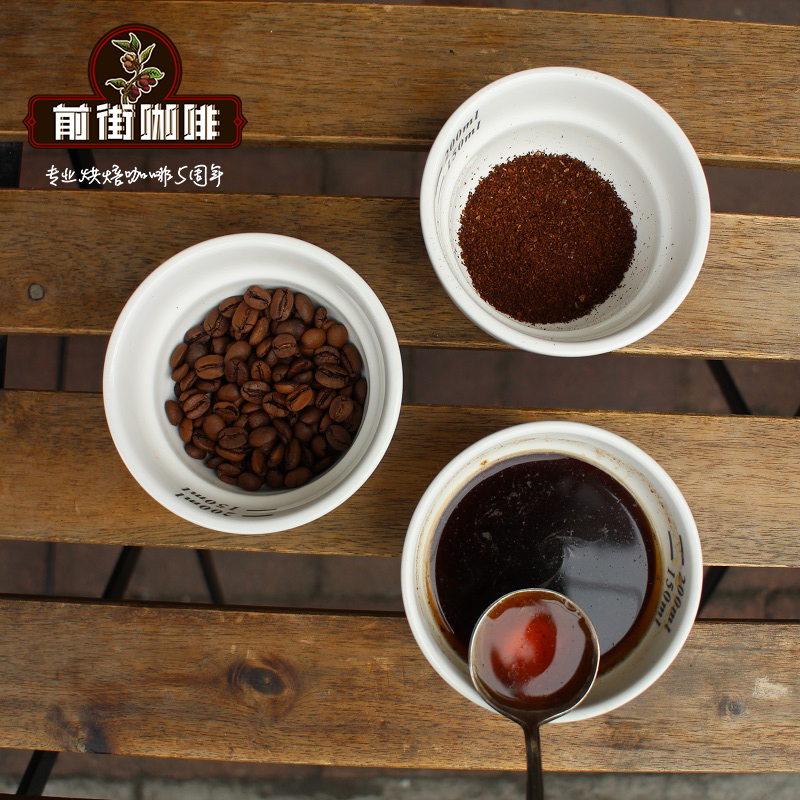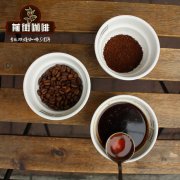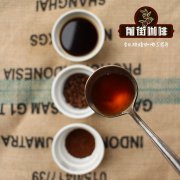Historical Story of Geisha varieties of Rosa Coffee and suggestions on brewing what is the price of Starbucks Rosa Coffee

Professional coffee knowledge exchange more coffee bean information please follow the coffee workshop (Wechat official account cafe_style)
Coffee bean species "Rose Summer" (also known as Rose Summer) is the original species of Arabica, which is very difficult to cultivate and the yield is half that of other coffee beans. Are rare, high-value coffee beans.
1931: a team of botanists visited southwestern Ethiopia and discovered rose beans near the village of Geisha. They brought Geisha seeds to Kenya and planted them in nurseries.
1936: Geisha seeds spread to Uganda and Tanzania.
1953: CATIE, a Costa Rican research institute, obtains some Geisha seeds from Tanzania for research.
1960: Pachi Serracin, the old owner of Don Patch Manor in Panama, brings Rose Summer Geisha to Panama from Costa Rica.
2004: best Panama BOP (Best of Panama auction), Emerald Manor won the first place of the year by virtue of its rosy summer. In the next ten years, as long as you participate in the exhibition, you will get a big prize.
2007: in the international famous bean cup test competition featured by American boutique coffee (SCAA), Rosa won the championship again, and the bidding price was sold at US $130 per pound, the highest price since the competition beans.
2008: Jade Manor opens its own bidding meeting (BOP did not participate in the competition that year).
2012: best Panamanian BOP (Best of Panama auction), divided into traditional group, Geisha group and tanning group, so as not to be stolen by Geisha in all beans during the competition.
2014: best Panama BOP (Best of Panama auction), subdivided into rose summer sun, rose summer water washing, traditional sun drying, traditional water washing, because rose summer will still take away the beauty of the sun group.
2015: best Panama BOP (Best of Panama auction), divided into winning group sunburn, winning group water washing, traditional tanning, traditional washing, allowing another excellent variety, Pacamala Pacamara, to join the competition, but the result was bleak, with only one batch of 32 batches shortlisted.
2005: best Panama BOP (Best of Panama auction): $20.10 (first batch)
2006: best Panama BOP (Best of Panama auction): $50.25 (first batch)
2007: best Panama BOP (Best of Panama auction): $130 (first batch)
2008: La Esmeralda Jade Manor auction: $105.25
2009: La Esmeralda Jade Manor auction: $117
2010: best Panama BOP (Best of Panama auction): $170
2011: best Panama BOP (Best of Panama auction): $75.25 (No. 1 in the washing group) and Don Pachi Geisha in the tanning group ($111.5)
2012: La Esmeralda Jade Manor auction: $66 (did not participate in BOP that year)
2013: best Panama BOP (Best of Panama auction): $350 (No. 1 in the Sunshine Rose Summer Group, won by Japan)
2014: La Esmeralda Jade Manor auction: $105.5 (this batch of Qianjie coffee had beans last year)
2015: La Esmeralda Jadeite Manor auction: $131( third batch) / $122.01 (first batch)
Best Panamanian BOP (Best of Panama auction): $140.01 (Summer Rose Champion)
Important Notice :
前街咖啡 FrontStreet Coffee has moved to new addredd:
FrontStreet Coffee Address: 315,Donghua East Road,GuangZhou
Tel:020 38364473
- Prev

What is the difference between the rose summer coffee treated with water and sun honey? How do Panamanian roses taste good?
Professional coffee knowledge exchange more coffee bean information please follow the coffee workshop (Wechat official account cafe_style) in 1931, in the border between Ethiopia and Kenya, a mountain forest called Geisha, local coffee farmers accidentally found that the coffee beans produced here have a very full, clean and clear sweet taste; rich aroma, from freshly picked berries to fermentation
- Next

Colombia Coffee Santa Tuario Manor Introduction Santa Tuario Manor Coffee Bean Flavor Features
Professional coffee knowledge exchange More coffee bean information Please pay attention to coffee workshop (Weixin Official Accounts cafe_style) is located in (CAUCA) located at an altitude of 1950-2100 meters in the alpine volcanic area, west of the Pacific Ocean, has a unique micro-climate. Coffee trees are mostly planted on volcanic slopes, absorbing the essence of volcanic ash soil, so this area is not only a good growing environment for coffee beans
Related
- Detailed explanation of Jadeite planting Land in Panamanian Jadeite Manor introduction to the grading system of Jadeite competitive bidding, Red bid, Green bid and Rose Summer
- Story of Coffee planting in Brenka region of Costa Rica Stonehenge Manor anaerobic heavy honey treatment of flavor mouth
- What's on the barrel of Blue Mountain Coffee beans?
- Can American coffee also pull flowers? How to use hot American style to pull out a good-looking pattern?
- Can you make a cold extract with coffee beans? What is the right proportion for cold-extracted coffee formula?
- Indonesian PWN Gold Mandrine Coffee Origin Features Flavor How to Chong? Mandolin coffee is American.
- A brief introduction to the flavor characteristics of Brazilian yellow bourbon coffee beans
- What is the effect of different water quality on the flavor of cold-extracted coffee? What kind of water is best for brewing coffee?
- Why do you think of Rose Summer whenever you mention Panamanian coffee?
- Introduction to the characteristics of authentic blue mountain coffee bean producing areas? What is the CIB Coffee Authority in Jamaica?

